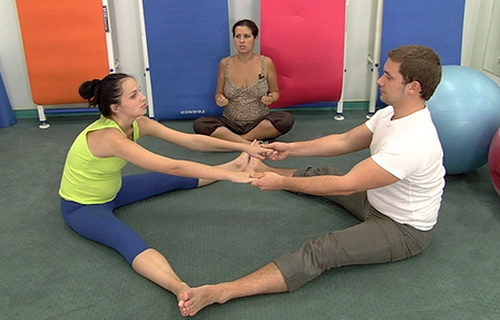
The Benefits of Exercise When You're Pregnant
Excercise during pregnancy helps improve the health of the mother, which directly impacts on the health of the child. A strong, healthy mother will have a shorter, less painful labor. A mother with strong spinal erectors will have less back pain toward the end of her term. And exercise helps mood and motivation at a time that can feel isolating and even frightening, allowing mothers to psychologically reclaim a degree of control. Giving birth is a physically traumatic process - it damages the body. A healthy, strong woman will recover faster from it and be less likely to suffer complications.
- Important notification about information and brand names used in this slideshow!
- Photo courtesy of 40weeks_ua by Flickr : www.flickr.com/photos/41350373@N04/3811076385/
- www.mayoclinic.com/health/pregnancy-exercises/
- http://www.nhs.uk/conditions/pregnancy-and-baby/pages/pregnancy-exercise.aspx#close
- http://www.fitpregnancy.com/exercise/prenatal-workouts/perfect-prenatal-circuit-workout/
- http://www.babycenter.com/0_the-13-rules-of-safe-pregnancy-exercise_622.bc
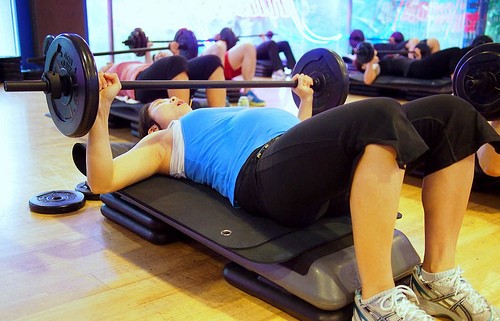
But Is It Safe To Exercise When You're Pregnant?
Exercise while pregnant can be the subject of cultural taboos. When a model and bodybuilder named Lee-Anne Ellison posted pictures online of herself lifting weights at eight and a half months pregnant, commenters suggested that she might injure or even lose her baby, while others called her selfish and image-obsessed. However, there isn't much evidence for any of this. Lifting subjectively extremely heavy weights in the last third of a pregnancy is a bad idea that can lead to complications, but training with weights isn't inherently dangerous to an unborn child. You don't need to use pink dumbbells - just don't try for a new PR until after the birth. Exercise can be scaled to your needs and abilities and shouldn't be seen as inherently risky.
- Important notification about information and brand names used in this slideshow!
- Photo courtesy of cumidanciki by Flickr : www.flickr.com/photos/cumidanciki/7807497768/
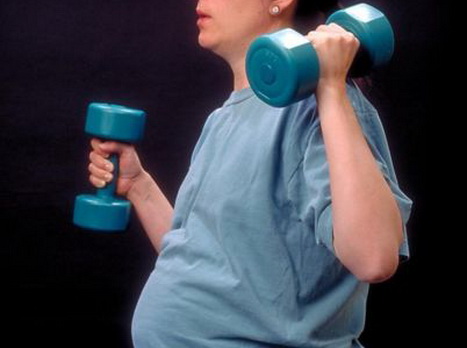
The More Active the Mother, The Easier the Delivery
The more active the mother is, the easier her labor is likely to be for her. 'Pregnant women who stay in shape tend to have shorter labors,' says Tekoa King, who besides being a certified nurse-midwife is an associate professor of obstetrics and gynecology at the University of California, San Francisco. 'Fitness improves endurance, and if you're better able to tolerate labor, you're less likely to end up needing medical intervention.' Being git also increases a person's ability to generate intra-abdominal pressure, a key factor in pushing during birth. But critics of Ms. Ellison's 'selfishness' might be surprised to learn that it's also likely to be easier for the child. 'Foetuses of exercising women may tolerate labour better than those of non-exercisers,' according to The Royal College of Obstetricians and Gynaecologists.
- Important notification about information and brand names used in this slideshow!
- Photo courtesy of GeorgeStepanek by Wikimedia Commons : commons.wikimedia.org/wiki/File:Pregnant_Woman_With_Dumbells.JPG
- www.dailymail.co.uk/femail/article-2425461/Mother-causes-social-media-storm-posting-pictures-weightlifting-EIGHT-months-pregnant.html
- http://www.parents.com/pregnancy/giving-birth/labor-and-delivery/10-secrets-to-an-easier-labor/

Don't Overtrain - Keep the Intensity a Little Lower Than You're Used To
Overtraining when you're not pregnant can damage your health, but it's not just your health that's at stake when you're pregnant. What's more, the warning signs for overtraining when you're pregnant are different to the ones you're used to. In particular, 'overtraining' when you're pregnant can mean training too intensely within a single session. A level of intensity that might have been normal during training before can leave to blood oxygen levels so low that the fetus' health can be affected, for instance. If you're concerned about exercising while you're pregnant, consult a doctor, but as long as you cut the intensity back you should be fine to carry on with the training methods you've already established.
- Important notification about information and brand names used in this slideshow!
- Photo courtesy of cumidanciki by Flickr : www.flickr.com/photos/cumidanciki/7807502528/
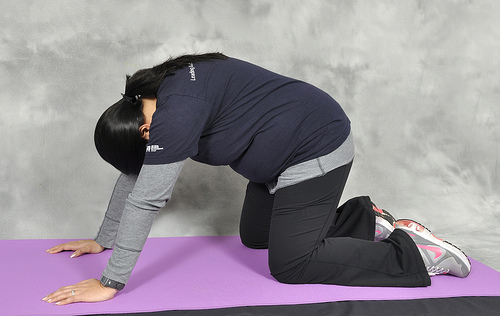
Warm Up and Cool Down Carefully With Attention to Posture
It's more important to warm up and cool down when you're pregnant than at other times. Your body is literally changing shape and your mobility will be different from what it once was. In the later months of pregnancy you produce more relaxin and elastin, meaning that stretching will be easier - but joints, including the spine, will be more vulnerable. It's a good idea to add a few minutes to your normal warm-up, and to use a warm-up that focusses on mobility rather than static stretching, which can neurologically deactivate muscles, or a purely cardio warmup. While cardio warmups are good, a mobility-based warmup lets you gauge the state of your body and test any weak points while preparing for the movements you're about to use in a structured way.
- Important notification about information and brand names used in this slideshow!
- Photo courtesy of A Healthier Michigan by Flickr : www.flickr.com/photos/healthiermi/7139442771/
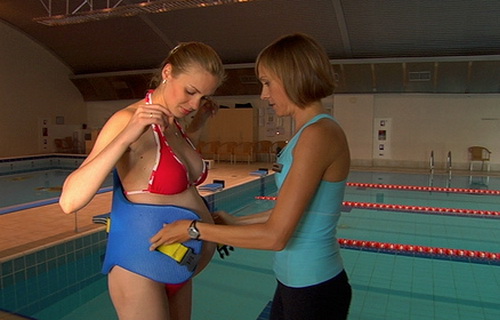
Focus On Building a Strong Core To Support Your Back
Exercises that strengthen the core can help to support the weight of the baby, resist the deformation of the lumbar spine under the baby's weight and help to strengthen the muscles that protect the baby while you're pregnant, and that push the baby out when you give birth. There's no strong evidence that a strong core makes giving birth easier and safer because studies have tended to focus on overall fitness, but a strong core is part of that anyway. Exercises that strengthen the pelvic floor are also recommended for pregnant women, since they will help protect you against postpartum problems in that area.
- Important notification about information and brand names used in this slideshow!
- Photo courtesy of 40weeks_ua by Flickr : www.flickr.com/photos/41350373@N04/3811106259/
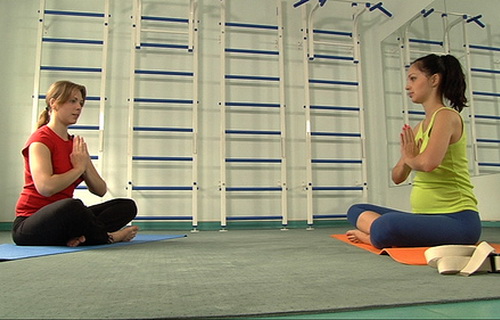
Pelvic Tilt Exercises Help To Correct Lumbar Lordosis
Pelvic tilt exercises are designed to free up the pelvis, mobilizing the area around the base of the spine and helping eliminate pregnancy-induced lordosis, or excessive curvature of the lumbar spine as the back tries to accommodate the weight of the child. To perform the pelvic tilt exercise, stand erect against a wall with your shoulders and backside against the wall, and then pull your belly button towards your spine, flattening your spine against the wall behind you. Keep your knees relaxed and hold this position for five to ten seconds. The relax and repeat. Each time you relax, try to keep a little more upright in the lower back.
- Important notification about information and brand names used in this slideshow!
- Photo courtesy of 40weeks_ua by Flickr : www.flickr.com/photos/41350373@N04/3811891904/
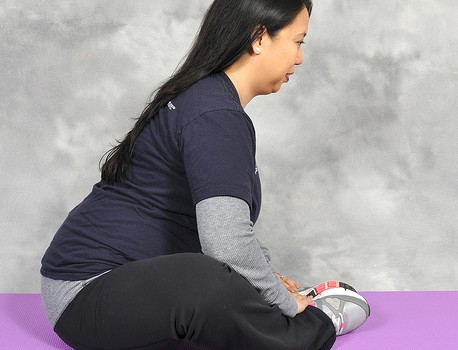
Pelvic Floor Exercises To Prepare For Labour and Reduce Postpartum Issues
Pelvic floor exercises were popularized by the Kegel exercises, which are used to combat urinary incontinence and poor ejaculation control in men, as well as in women for being used to prepare pregnant women for the stresses of childbirth. The popular explanation of how to do a Kegel exercise is to imagine that you're urinating, and then stopping in mid-flow. After a little practice it should be possible to activate this area - the pubococcygeus muscle - without the muscles of the anus being affected. Stay away from devices that are supposedly used to strengthen the pelvic floor unless someone medically qualified recommends them; a range of devices to be held between the thighs is available but is counterproductive since these teach you to activate your hip adductors, not your pelvic floor; seated hip adductor exercises are associated with low back pain and hip injuries.
- Important notification about information and brand names used in this slideshow!
- Photo courtesy of A Healthier Michigan by Flickr : www.flickr.com/photos/healthiermi/7139440777/

Exercises to Avoid When You're Pregnant
You should avoid any exercise that pushes your heart rate very high - so HIIT and very intense weightlifting or strength training are out. Also, sports or activities where there's a risk of falling like rock climbing, horse riding and so on are a bad idea for obvious reasons - as are contact sports such as martial arts or rugby. In addition, try to avoid exercising while lying on your back, since this can reduce venous return to the heart and cause blood pressure to fall dangerously, causing fainting. Scuba diving is also out because of the risk to the fetus of gas embolism (the bends) and compression/decompression problems, and exercise at altitudes over 2, 500m above sea level can bring on altitude sickness. If you're accustomed to training with heavy weights, you don't need to stop - just crank down the intensity, bump up the reps a bit and don't go for any PRs until after the birth!
- Important notification about information and brand names used in this slideshow!
- Photo courtesy of pixydust8605 by Flickr : www.flickr.com/photos/pixydust8605/1415321168/

Stay Hydrated - It's Easier Than You Think to Become Dehydrated When You're Pregnant
Dehydration is a complex thing. On one hand, most people emphasize it far too much in the gym, taking a sip of water every few seconds - but at home they'll neglect hydration. For pregnant women, though, hydration is even more important. Dehydration in pregnancy can lead to an insufficient amount of amniotic fluid, with the baby laying directly against the uterus as a result, which runs the risk of causing limb deformities. In later pregnancy, dehydration can cause heat exhaustion, muscle cramps, and even premature labor. Avoid dehydration sneaking up on you by monitoring how much you drink - it can be easy to forget and to begin to suffer dehydration without realizing it!
- Important notification about information and brand names used in this slideshow!
- Photo courtesy of Garrett Charles by Flickr : www.flickr.com/photos/g-ratphotos/3223350645/





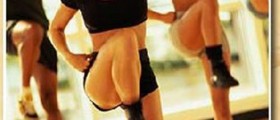


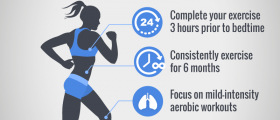





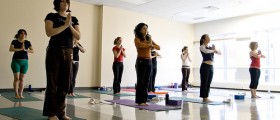

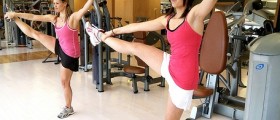
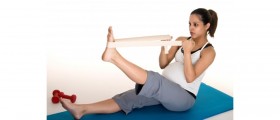







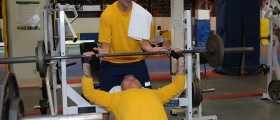
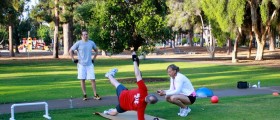
Your thoughts on this
Loading...